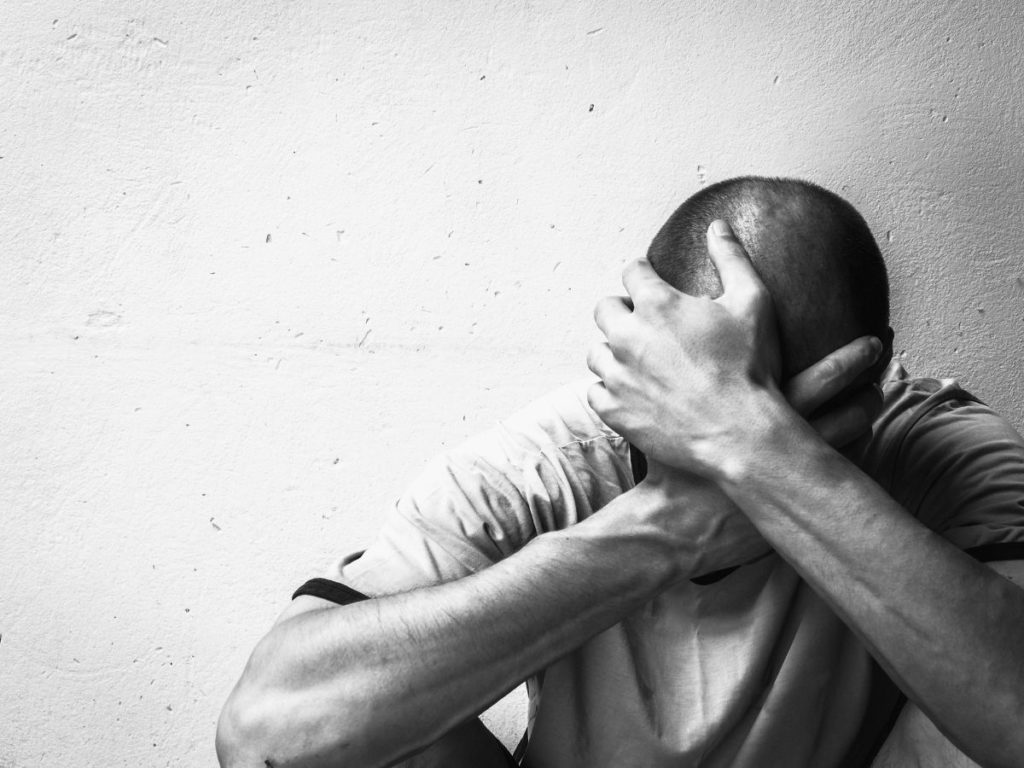What Is Dilaudid?
Dilaudid (Hydromorphone) is a schedule II controlled substance prescribed for moderate to severe pain. The drug attaches to receptors in the brain and central nervous system (CNS) to dull pain. Dilaudid also triggers the release of excessive amounts of dopamine in the brain, causing pleasurable feelings. This activates the reward center of the brain, which interprets the event as something that is important and should be repeated. The more this happens, the less the brain will naturally produce dopamine, and the more reliant the body becomes on Dilaudid, that’s how you develop Dilaudid addiction.
Doctors prescribe Dilaudid for pain related to cancer and serious injuries such as burns. The time it takes for the drug to take effect varies depending on how it is taken. When taken orally, Dilaudid typically takes effect within 30 minutes to an hour. When used intranasally, it typically takes 5 minutes; its effects are almost immediate when taken intravenously. Regardless of the method of administration, the effects of Dilaudid typically last between four and six hours.
Doctors typically prescribe Dilaudid tablets in small doses. Some pills are round, and some are triangular. Dilaudid is also available as an oral liquid. In a hospital setting, doctors may administer the substance intravenously. Other brand names for Hydromorphone are Exalgo, Palladone, and Dilaudid-hp. Street names include D’s, Dillies, Big D, M-80s, and Peaches.

Who Abuses Dilaudid?
The NSDUH of 2014 found that the highest percentage of people abusing prescription opioids were between the ages of 18 and 25. The DEA reports that suburban and rural populations are more likely to abuse hydromorphone specifically and that diversion occurs most often through forged prescriptions, going to multiple doctors for prescriptions, pharmacy robberies, thefts of the medication from nursing homes, armed robberies, and direct and illegal diversion from pharmacists and physicians.
On the street, Dilaudid is known as footballs, dust, smack, dillies, juice, and D. Opioid drugs like Dilaudid are popular with recreational users, likely because of the way the drugs interact with opioid receptors in the brain and along with the central nervous system. They disrupt the flow of some of the brain’s natural messengers, signaling pleasure and dispelling anxiety and stress.
Dilaudid is a full opioid agonist, meaning that it fills opioid receptors and mimics some of the brain’s normal functions, including how these natural chemicals are reabsorbed. This can create a kind of backlog of some of the brain’s messengers like dopamine and its natural endorphins. Endorphins work to regulate emotions, and dopamine is the brain’s chemical messenger that tells a person when to feel happy.

When this drug floods the brain due to the inability to be reabsorbed naturally, or through artificial stimulation of its production, it can cause an unnatural spike in euphoria, or a “high” that recreational drug users may strive for.
Being a more potent opioid than many others, Dilaudid is commonly sought by people wishing to feel this intense high. Dilaudid has a short onset of action of 10-15 minutes, which is desirable to users as well.
Dilaudid may be abused by swallowing the tablets, chewing them, crushing and snorting or smoking them, or by injecting the crushed tablets after mixing them with liquid. The DEA published that as of 2011, 1 million people aged 12 and older had used Dilaudid recreationally, or for nonmedical purposes, at least once in their lives.
Dilaudid side effects
Along with its needed effects, a medicine may cause some unwanted effects. Although not all of these Dilaudid side effects may occur, if they do occur they may need medical attention. Check with your doctor immediately if any of the following Dilaudid side effects occur:
Less common Dilaudid side effects
- Agitation
- Bloating or swelling of the face, arms, hands, lower legs, or feet
- Bloody, black, or tarry stools
- Blurred vision
- Changes in behavior
- Chest pain or discomfort
- Decreased urination
- Dry mouth
- Fast, pounding, slow, or irregular heartbeat
- Lightheadedness, dizziness, or fainting
- Mood or mental changes
- Rapid breathing
- Severe stomach pain, cramping, or burning
- Stiff neck
- Sunken eyes
- Thoughts of killing oneself
- Trouble breathing
- Unusual tiredness or weakness
- Vomiting of material that looks like coffee grounds, severe and continuing
- Wrinkled skin
General Dilaudid side effects
- Irregular, fast or slow, or shallow breathing
- Loss of appetite
- Mental depression
- Nausea
- Noisy breathing
- Overactive reflexes
- Painful urination
- Pale or blue lips, fingernails, or skin
- Poor coordination
- Restlessness
- Sweating
- Talking or acting with excitement you cannot control
- Tightness in the chest
- Trouble sleeping
- Vomiting
- Bluish lips or skin
- Change in the ability to see colors, especially blue or yellow
- Cold, clammy skin
- Confusion
- Constricted, pinpoint, or small pupils (black part of the eye)
- Cough
- Darkening of the skin
- Decrease in frequency of urination or urine amount
- Deep or fast breathing with dizziness
- Difficulty in passing urine (dribbling)
- Fast or weak pulse
- Headache
- Hives or welts, itching, skin rash
Signs of Dilaudid Overdose
Every single day in the United States 44 people die from a prescription opioid painkiller overdose, the Centers for Disease Control and Prevention (CDC) reports. Powerful narcotics such as Dilaudid slow down some of the necessary bodily functions like breathing, heart rate, body temperature, and blood pressure. An opioid overdose is usually the result of respiration levels dropping too low and breathing stops. The FDA cites the following as signs of a Dilaudid overdose:
- Shallow, slow breaths or trouble breathing
- Drowsiness
- Possible loss of consciousness or falling into a coma
- Lack of muscle tone or flaccid skeletal musculature
- Cold or clammy skin
- Constricted pupils
- Low blood pressure
- Weak pulse or slow heart rate
Anytime too much of the drug is introduced into the bloodstream at once, an overdose is possible; however, the method by which a person takes Dilaudid can impact overdose. Snorting, smoking, or injecting it sends the full dosage of the drug very quickly across the barrier between a person’s blood and brain and can raise the risk for overdose. Injecting Dilaudid may increase the risk of suffering from an overdose by resulting in a collapse of the circulatory system, cardiac arrest, or apnea, the FDA warns.
A Dilaudid overdose is potentially fatal, and immediate medical attention should be sought if one is suspected. The Drug Abuse Warning Network (DAWN) reported almost 20,000 emergency department (ED) visits involving the nonmedical use of hydromorphone in 2011.
Taking additional drugs or alcohol in combination with Dilaudid also heightens the potential hazards and the possibility of suffering from a life-threatening overdose. The DAWN Report in 2014 published that mixing opioid pain relievers such as Dilaudid with benzodiazepines or alcohol greatly increased the risk of a more serious negative interaction. Benzodiazepine medications are sedatives and tranquilizers, and they also suppress the central nervous system. Since alcohol, benzodiazepines, and Dilaudid all function to lower these vital life functions, combining them can have disastrous consequences.
Dilaudid Addiction
Opioid drugs act on the central nervous system, suppressing cough symptoms and pain sensations as well as lowering blood pressure, heart rate, and respiration levels. Opioids enhance calm and relaxation, and when abused, they can produce a euphoric “high.”
Prescription opioid drugs are heavily abused around the world, as the World Health Organization (WHO) reports that an estimated 15 million people around the globe battle opioid addiction. In the United States, the National Survey on Drug Use and Health (NSDUH) estimated that 4.3 million Americans aged 12 and older were considered current abusers of prescription painkillers at the time of the 2014 survey, meaning that they had used one for nonmedical reasons in the month prior.
The Substance Abuse and Mental Health Services Administration (SAMHSA) publishes that close to 2 million people in the United States suffered from a substance use disorder related to prescription pain reliever abuse in the year leading up to the 2014 national survey.

Prescription drug abuse and addiction are often treated with behavioral therapies and pharmacological methods in specialized facilities where individuals can receive education, and tools for stress management, help remove the drug safely from the body via medical detox, and support throughout treatment and into recovery. Both residential and outpatient programs offer a range of services and treatment methods that can help an individual recover from opioid addiction and sustain long-term abstinence through relapse prevention, aftercare, and support services.
Treatment for Dilaudid addiction
Overdose is also a concern for individuals who have detoxed from Dilaudid and then suffer a relapse. A return to Dilaudid addiction after the body has purged it completely can be dangerous as the person may return to using the drug at previous levels only to discover that tolerance has changed. This can increase the chances that the person will suffer an overdose. Comprehensive substance abuse treatment programs can help to prevent relapse, and offer support and continuing care for those struggling with opiate addiction.
Reclaim Your Life From Dilaudid Side Effects With Dual Diagnosis Rehab Washington
Addiction is a condition that can cause major Dilaudid side effects, apart from health, social and economic problems that should not be taken lightly. We Level Up dual diagnosis rehab Washington can provide you, or someone you love, the tools to recover from addiction with professional and safe Dilaudid detox. Feel free to call us to speak with one of our counselors. We can inform you about this condition by giving you relevant information. Our specialists know what you are going through. Please know that each call is private and confidential.